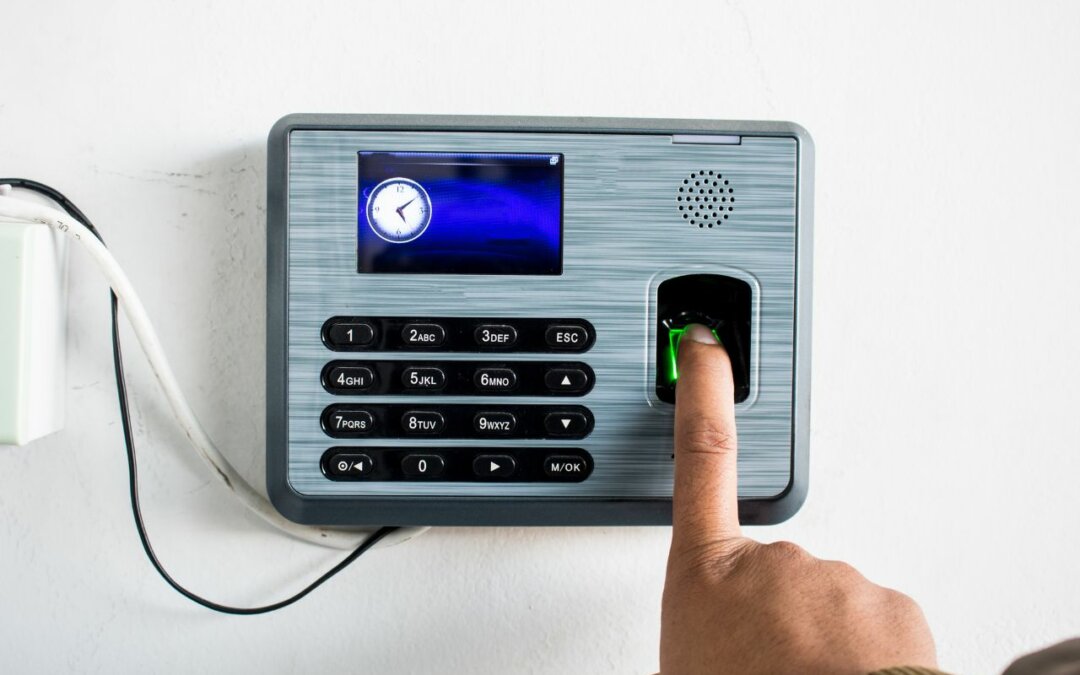A biometric lock is a security device that uses one’s physical characteristics to unlock the door. This can be a fingerprint, an eye scan, or even a voice recognition. Most people have heard of biometric locks, but many don’t know what they are or the benefits they offer. In this blog post, we will discuss the different types of biometric locks as well as their benefits. Stay tuned!
What Is A Biometric Lock?
A biometric lock is a type of security device that uses a person’s unique physical characteristics to identify them. The most common form of biometric identification is fingerprinting, but other methods may also be used, such as iris recognition or hand geometry. Biometric locks are typically more expensive than traditional locks, but they offer a higher level of security by making it impossible for someone to gain access to a locked area without the proper biometric data.
In addition, biometric locks are often faster and more convenient to use than traditional locks, as they eliminate the need to carry around keys or remember complex codes. As the technology continues to improve, biometric locks are likely to become increasingly popular in both commercial and residential settings.
How Does A Biometric Door Lock Work?
A biometric door lock is a type of lock that uses fingerprint or other biometric data for identification. When someone attempts to unlock the door, the lock compares the person’s biometric data to its stored database. If there is a match, the door is unlocked. If there is no match, the door remains locked.
Biometric door locks offer a number of advantages over traditional locks. First, they are much more difficult to pick. Second, they are nearly impossible to duplicate. This means that only authorized individuals will be able to access the locked area. Third, biometric data is unique to each individual. This makes it impossible for someone to use another person’s fingerprint or other biometric data to unlock the door. Finally, biometric door locks offer a high level of security while still being relatively easy to use.
Benefit Of A Biometric Lock Over Traditional Lock
In a world of evolution of technology, it’s no surprise that the way we secure our homes is also changing. Traditional locks and keys are increasingly being replaced by biometric locks, which offer a number of advantages over their more-traditional counterparts.
One of the most significant benefits of biometric locks is that they’re much more difficult to pick than traditional locks. This is because the locking mechanism is activated by a physical characteristic of the person, such as their fingerprint, rather than a physical key. This means that even if someone manages to get hold of your key, they won’t be able to use it to enter your home unless they also have your fingerprint.
Another advantage of biometric locks is that they offer a higher level of security than traditional locks. This is because it’s much harder to forge a person’s fingerprint than it is to copy a key. As a result, biometric locks provide a much stronger deterrent against intruders.
Finally, biometric locks are also convenient for homeowners as they allow you to quickly and easily unlock your door without having to fiddle with keys. This can be particularly helpful if you have your hands full or if you’re in a hurry.
Overall, biometric locks offer a number of advantages over traditional locks, making them an ideal choice for those looking for an extra layer of security for their home.
Types Of Biometric Door Locks
There are many types of biometric door locks on the market today.
Here are some types of biometric locks:
Optical Fingerprint Scanners
These types of door locks use a light source and sensor to record the image of your fingerprint. The sensor then converts the captured fingerprint into a digital template.
2 Radio Frequency Identification (RFID)
RFID technology uses electromagnetic fields to identify people or objects. RFID door locks work by scanning an RFID tag that is attached to a person or object.
Facial Recognition
Facial recognition door locks use cameras to capture and compare images of faces. The door lock will only open if the person’s face matches the image on file.
Retina Scanners
Retina scanner door locks use a low-intensity light source and sensor to record the unique pattern of blood vessels in your eye. The door lock will only open if the person’s retina matches the image on file.
Voice Recognition
Voice recognition door locks use microphones to record and compare the sound of a person’s voice. The door lock will only open if the person’s voice matches the sound on file.
Hand Geometry
Hand geometry door locks use a scanner to record the shape of a person’s hand. The door lock will only open if the person’s hand matches the image on file.
Keycard
Keycard door locks use a card with a magnetic stripe or barcode that is swiped through a reader. The door lock will only open if the card’s information matches the information on file.
Biometric Safe
A biometric safe is a type of safe that uses biometric technology to protect valuables. The safe will only open if the person’s fingerprint, handprint, or retina matches the image on file.
Biometric Time Lock
A biometric time clock is a type of time clock that uses biometric technology to record when an employee arrives and leaves work. The time clock will only allow an employee to clock in or out if the person’s fingerprint, handprint, or retina matches the image on file.
Biometric Gun Safe
A biometric gun safe is a type of gun safe that uses biometric technology to prevent unauthorized access to firearms. The safe will only open if the person’s fingerprint, handprint, or retina matches the image on file.
How To Install Biometric Locks?
Installing a biometric lock is a relatively simple process that can be completed in just a few minutes. The first step is to remove the existing lock from the door. Next, the biometric lock should be positioned in the hole and secured with the provided screws. Once the lock is in place, it will need to be connected to a power source.
This can be done by running a wire from the battery pack to the lock. Finally, the biometric sensor will need to be calibrated to ensure accuracy. With these steps, anyone can install a biometric lock on their own.
What Is The Cost Of Installing Fingerprint Locks?
Fingerprint door locks are a type of electronic lock that uses fingerprint recognition technology to grant access to a secured area. They are often used in high-security environments, such as government buildings or sensitive facilities. Installing fingerprint locks can be a costly investment, but there are several factors that can affect the price.
The cost of the actual locks themselves will vary depending on the brand and model. In addition, the cost of installation will vary depending on the number of locks being installed and the complexity of the job. However, the benefits of installing fingerprint locks, such as increased security and convenience, can often outweigh the initial cost.
Conclusion
A biometric lock is a type of locking system that uses unique physical characteristics to identify an individual. These characteristics could be something as simple as a fingerprint or as complex as the retinal pattern in your eye.




